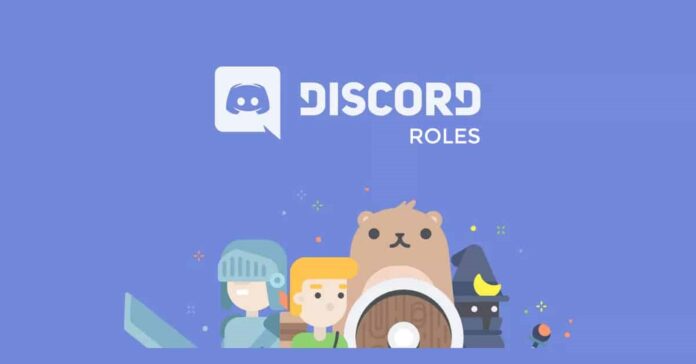These days, online gamers prefer Discord Role for voice and text chat. It’s simple to use, highly customizable, and includes several useful chat features.
Users can be assigned and managed roles in your chat server as part of these features. Read this article to learn how to add, manage, and delete roles in Discord.
Discord Role: What Are They?
A role is a predefined set of permissions with a name in Discord. For example, a default role called “@everyone” grants a wide range of basic permissions, such as talking on the server and reading messages.
A server administrator might add a “Moderator” role, allowing users to mute or ban other users. Users can also have multiple roles; for example, someone with the @everyone and Moderator roles would have all of the powers of @everyone in addition to the management of a Moderator.
Permissions in Discord
Discord has 29 permissions, divided into General, Text, and Voice. To properly assign roles, you must first understand what each one does. A list of each consent is provided below for your convenience.
Permissions Generally
- Administrator – The Administrator permission grants all of the permissions on the server. Because it gives the user much power, granting this permission can be risky.
- View Audit Log: This permission allows the user to read the audit logs of the server.
- The Manage Server permission allows the user to change the server’s name or relocate it.permission allows the user to change the server’s name or relocate it.
- The Manage Roles permission allows the user to create new roles and edit roles that do not have the Manage Roles permission turned on.
- The Manage Channels permission allows users to create, edit, and delete channels on the server.
- Kick Members – This permission allows users to kick members off the server.
- Ban Members – This permission allows users to ban members from the server.
- The Create Instant Invite permission allows the user to invite others to the server.
- The user may change his or her nickname with this permission.
- Manage Nicknames: This permission allows users to change other users’ nicknames.
- Manage Emojis – This permission allows users to manage emojis on the server.
- The Manage Webhooks permission allows users to create, edit, and delete webhooks.
- Read Text Channels & See Voice Channels – This permission allows users to read the message channels.
Permissions for Text
- Send Messages – This permission allows the user to send messages on the text chat.
- Send TTS Messages – This permission allows the user to send text-to-speech messages.
- Message Management: This permission allows users to delete or pin messages from other users.
- Embed Links – This permission allows the user to embed hyperlinks in the chat.
- Attach Files – This permission allows users to attach files in the chat.
- Message History Read – This permission allows users to scroll back and access previous messages.
- Mention Everyone: This permission allows users to send push notifications to the channel’s members.
- Use External Emojis – This permission allows users to use emojis from other servers.
- This permission allows the user to add new reactions to a message.
Voice Permissions
- Connect – This permission allows the user to connect to the voice channel (i.e., hear).
- Speak – This permission allows the user to speak on the voice channel.
- Mute Members: This permission allows the user to turn off the ability to speak of another user.
- The permission of Deafen Members allows the user to turn off another user’s ability to hear on the channel.
- Move Members: This permission allows users to move other members from one channel to another.
- This permission allows the user to speak without using Push-to-Talk. Use Voice Activity
- Priority Speaker – This permission allows the user to reduce the volume of other users while speaking, making their words louder on the channel.
“ecosystem” refers to a group working in the construction industry.
Setting up your roles correctly is essential for managing your users on a Discord server.
It’s a good idea to create the basic roles before inviting people to the server. When you’re in business, you can always go back and add new roles or rearrange existing ones.
- Log in to Discord and access your server.
- Click Server Settings after selecting the small drop-down arrow next to the server name.
- “ecosystem” refers to a group working in the construction industry.
- Create a Role by clicking the button.
- You will see your new role listed as New Role.
- Assign a color to the role and give it a descriptive name (functions help users understand one another’s roles).
- Select Save Changes at the bottom of the page after reviewing all 32 permissions and selecting only the ones you want to be associated with that role.
- If you forget to save your changes, a dialogue box will appear, reminding you to do so before continuing.
For each additional role, you want to create, repeat.
Assigning different permission levels to different roles creates a trust hierarchy.
You can set lower functions to newcomers and higher roles with more permissions to people you know well.
Role in Discord: How to Assign Them
After creating them for your server, you must assign user roles in your chat. Then carry out the following:
- Click on the role you want your members to play.
- Members can be managed by clicking on the appropriate button.
- Click the Add Members button.
- To add a member to that role, check the box next to their name and click Add.
If you only need to add one or two members, this method is faster:
- From the right-hand pane, select the user to whom you want to assign a role.
- Select the role from the list by clicking the small + next to the user’s name.
Repeat this process for each user on your server.
You can also quickly add roles by right-clicking the user, selecting Roles, and selecting the position (s) you want to add from the pop-up menu.
Remember to add as many roles as you want for each user.
Discord Mobile Role Assignment
The instructions are similar to those found in the desktop application.
- Select your server after launching Discord. Tap the three vertical dots next to your Server’s name at the top of the page.
- Scroll down to Members by tapping Settings.
- To assign an existing role, click on the usernames of the users.
- Tap the Edit Roles button.
- For the role you’re assigning, tap on the checkbox next to each member’s name.
Discord Mobile Role Editing
Go to the server’s settings and, as before, tap on Roles. Then, follow these instructions:
- To edit a role, tap it.
- Scroll through the list and make any necessary changes.
Following the steps mentioned above will keep your Discord server organized and productive even when you’re on the go.
“ecosystem” refers to a group working in the construction industry.
Managing roles is similar to creating them in Discord.
If necessary, you can add more functions and change the permissions. Depending on how you want to run your server, you could get away with only creating admin and @everyone roles.
Head back to the Server Settings and click Roles, as we did above, to quickly add/remove members or change permissions. Then, follow these steps:
- To limit what members can do on your server, select Permissions.
- Add or remove members by selecting Manage Members.
You can add more people as your community expands. Because roles must be added individually to each user, the most efficient use of your time is placing as many of your server’s policy decisions as possible in the @everyone role.
You may have noticed the left column on the Roles page, which displays the names of all roles you create. The color of the highest role assigned to a user will be displayed in Usernames on the server. The moderators, admins, and other users on the server can be easily identified.
In Discord, How to Delete Roles
In Discord, you wouldn’t often need to delete a role because you couldn’t assign it. Instead, you’d need to post it again. If your account is clogged with new functions, here’s how to delete them.
- Select Server Settings by clicking the tiny drop-down arrow next to your server.
- Clicking Okay will confirm.
Assigning Discord Roles Using Bots
For a more hands-off approach to managing roles on Discord, users can add bots. Bots like Mee6 and Dyno Bot popularise role moderation. We have a comprehensive tutorial on the subject available here. However, if you want to unwind a little, try this:
- To the server you manage, add the bot.
- Click Dashboard on the bot’s website.
- Select Moderation from the menu.
- Then, configure the Automatic Moderation options to meet your requirements.
When new members join your server, they can now be automatically assigned to the “Welcome” role. Or, members who meet certain criteria can move to a special position for tenured users.
Frequently Asked Questions
On Discord, there’s always something new to learn. This section contains more information about roles.
Can Discord automatically assign roles?
Absolutely! However, you might need a bot to do it. Managing a Discord server can be a daunting task. Fortunately, you can add additional Admins to assist you or consider using bots.
I am an Admin, but I am unable to manage the server. What is going on?
If the server’s owner gave you an Admin role, but you can’t make changes, they didn’t turn on all permissions on your part. Verify your authorization with the server owner.
Last Thoughts
Role management is essential to keeping a Discord server organized, especially as it gains users.
Keep in mind that each server can only have 250 different roles. Only define some possible combinations of permissions you might want to use; you’ll quickly run out of parts if you do. This should be fine in practical terms, but don’t start doing so.



